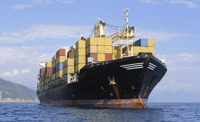U.S. investment monitor shows increase in business capital investment
Over 5,400 business investments were announced in 2015 and are expected to create or retain more than 402,000 jobs in the United States.

U.S. business investment projects accounted for $166 billion in capital investment in 2015, according to the EY 2016 US Investment Monitor (USIM), an annual report prepared by the Ernst & Young LLP Quantitative Economics and Statistics (QUEST) and Indirect Tax Incentives practices. Over 5,400 business investments were announced in 2015 and are expected to create or retain more than 402,000 jobs in the United States. Although the total amount of capital is $16 billion higher than the previous year, there was a 2% decrease in the total number of projected jobs.
"Many factors contribute to a company's decision to invest in a particular location, and awareness of industry trends, workforce development levels and the availability of state and local tax incentives can help businesses choose where to locate their mobile capital investments," says Andrew Phillips, principal, Ernst & Young LLP. "States should continue to find their competitive edge to attract a wide variety of investment types and maintain a healthy economy."
Data from the announced projects points to longer-term trends shaping economic development both regionally and across industries. The USIM is a leading indicator showing where new investment spending and jobs can be expected over the next several years.
The report focuses on U.S. and foreign companies' mobile capital investments, which are not tied to specific markets or geographies. Mobile capital investments include headquarters facilities, data and call centers, manufacturing facilities, distribution centers and research facilities, and include a wide range of location options. Companies continue to pursue locations with high supply chain potential, low input costs, strong business incentives, growing industry clusters and advantageous state and local tax systems. Because companies research and analyze the relative merits of different locations before deciding where to invest, these mobile capital investments serve as indicators of a region's or state's long-term economic growth potential and competitiveness.
Projects capturing high amounts of investment include chemical manufacturing facilities, which account for nearly 40% of all investment, followed by motor vehicle manufacturing and machinery manufacturing facilities. In total, non-durable manufacturing represents over half the announced capital investments in 2015. Durable manufacturing also plays a strong role, with industries including machinery, motor vehicle and semiconductor manufacturing accounting for approximately $45 billion in investment announcements.
States along the Gulf Coast continue to attract the greatest amounts of mobile capital investment. For the fifth year in a row, Texas and Louisiana received more than 30% of all announced investment.
Durable manufacturing and office facilities for business support and professional services were also key job creators. Other industries poised to add significant employment include wholesale and retail trade, as well as food and beverage product manufacturing. The Southeast continues its trend in attracting the top job-creating mobile projects across a wide range of industries, from financial and professional services to chemical manufacturing. Among the Top 20 job announcements, six major job-creating projects were in the automotive manufacturing industry, a prominent increase compared to last year.
Although U.S. project announcements by foreign investors have slowed over the past two years, the United States remains one of the top destinations for investment. Factors including relatively low regulation, a large middle class, a culture of innovation and some of the world's leading educational institutions have helped the nation maintain an economic advantage.
Looking for a reprint of this article?
From high-res PDFs to custom plaques, order your copy today!






